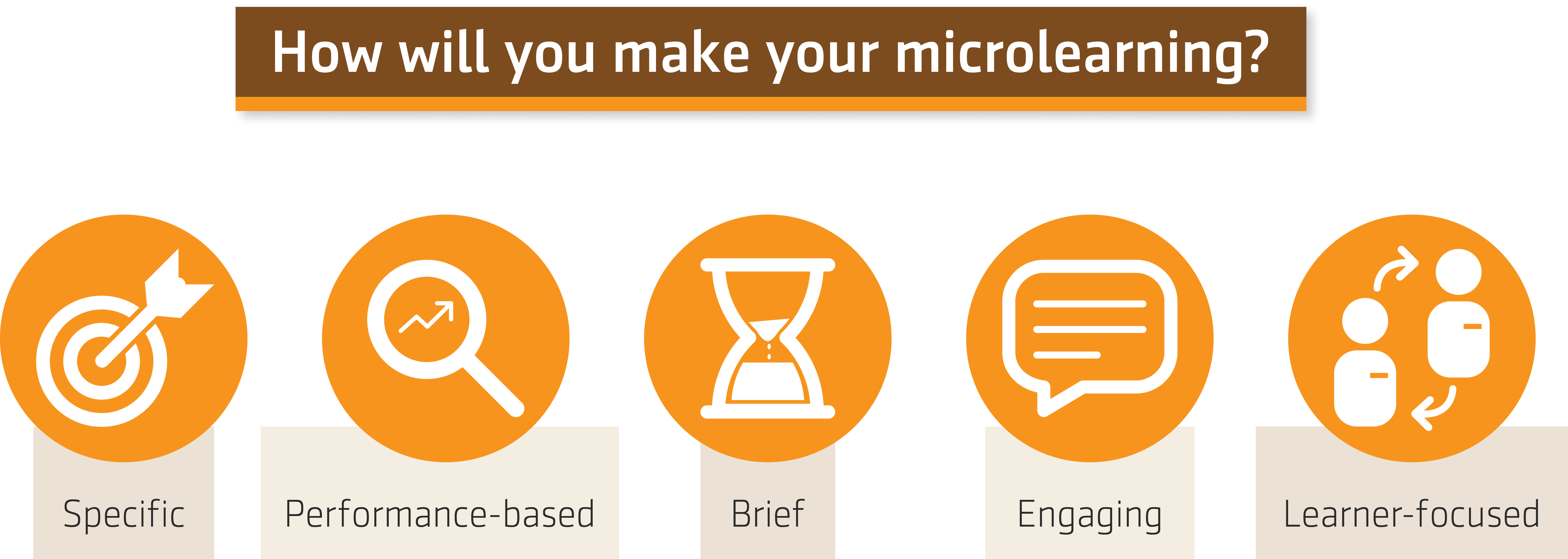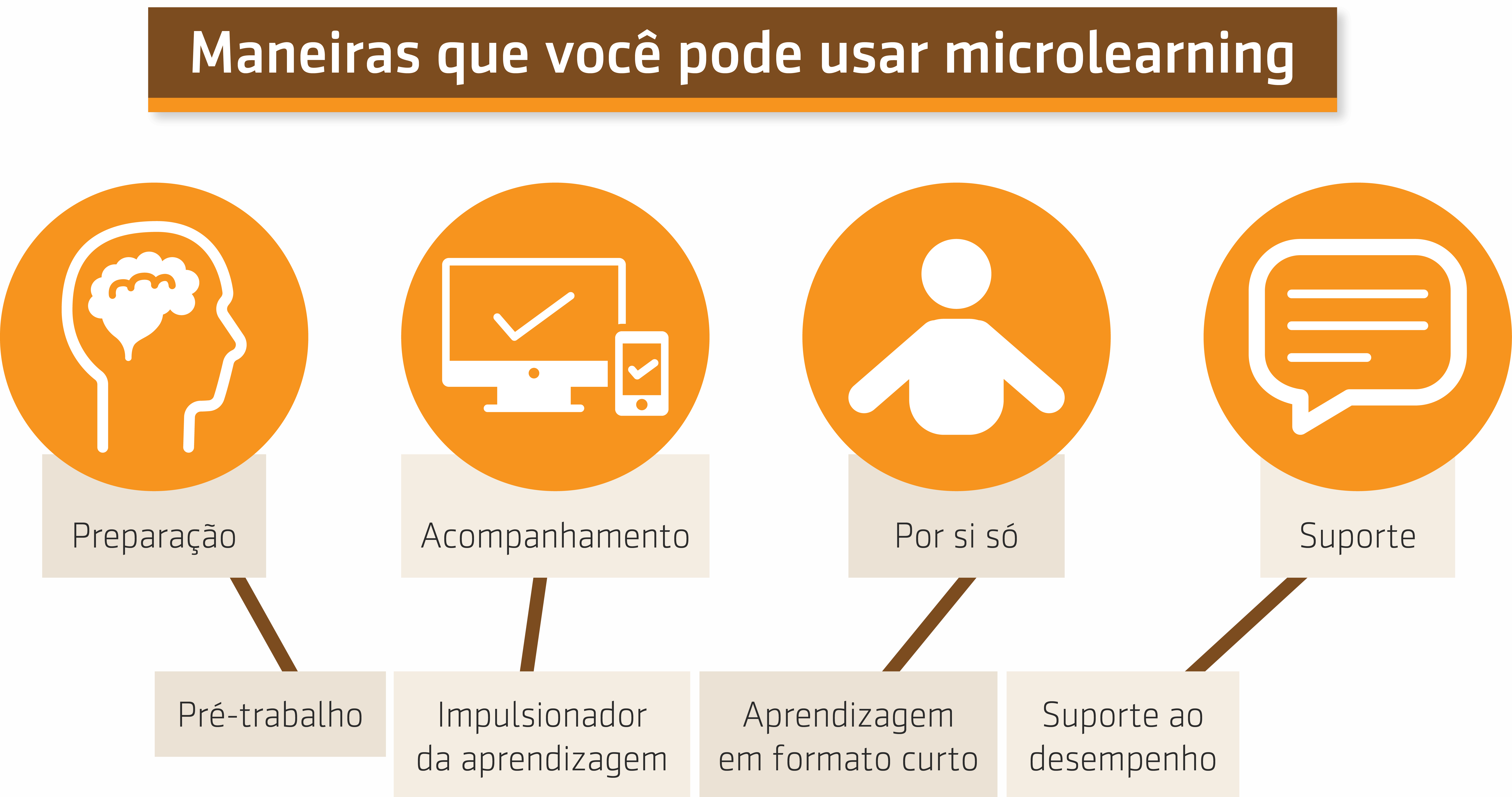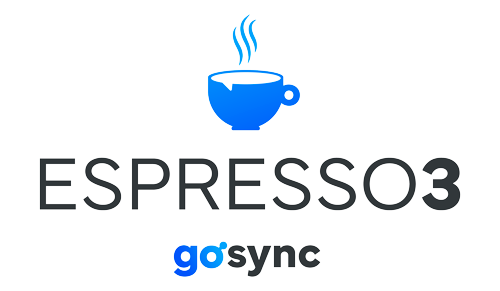We are at the ATD 2019 and my first interviewee is Carla Torgerson the author of the book “The Microlearning Guide to Microlearning“, and we will talk about the effective microlearning. I’m Wagner Cassimiro and this is the Espresso3.
Hi Carla.
Hi, how are you Wagner?
What are the ways that we can use microlearning?
I think that are four key ways to use microlearning. If we think about supporting longer form of instructions, say classroom instruction, we can use microlearning either before, as a form of pre–work or we can use it afterwards, and we, sometimes, call that boost learning, support and reinforcement after the classroom event.
The other two ways are to have, either standalone microlearning, just lessons that are short all by themselves, or to have performance support, which is that after they have learned, or after they are using this material you are supporting them while they are on the job.
To have the learning in the workflow?
Yes! Exactly!
Right in the workflow.
Is it possible to use microlearning for everything?
I would say no!
I often say “I don’t want to go to a doctor who only studied at the microlearning school of medicine”. Right?
I want microlearning to be used when it fits best. And there are a number of times when it will fit best. One good example is compliance training. A lot of people don’t want to have to take compliance training. So, what if we made it shorter for them? Give them just a little bit. Or, instead of one hour of training once a year, what if we just did five minutes once a month. That’s a really good example of a spot where microlearning fits well.
So, another one would be in addition, if it’s something that people forget easily. Let’s offer them some performance support to enable them to remember it. Or if it’s difficult when they’re using it on the job.
Then, the other one that I like to think of it is if the learner is either very, very interested in your content or the opposite. So if they’re really interested in your content, you can offer informal learning. Stuff that’s not required. But on the flip side if there’s that class or content that, I like to think of it as just the stuff that nobody wants to take, instead of forcing them to take a lot of it, all at once, and you know they’re going to tune out and they’re not going to consume it well, what if you offered them little tiny bits along the way? I like to think of it, with my son, I often say, “just take two bites of vegetables, don’t eat the whole plate” and I think the same is true for learning.
Good strategy. I’ll apply it with mine too.
So, my last question is, could you share some tips for someone who has this intention to implement microlearning?
If you want to do microlearning resources really well, the first thing you need to do is be very specific. So really think about that content and get it down to something really narrowly focused. And then, within that, be performance focused. If I’m going to create a piece of microlearning for you, what is it that you’re going want to do because you’re consuming that content? We say that with learning materials all the time but I think it’s even more prevalent with microlearning. Because it’s small stuff that I want to consume quickly and get back to work. Make sure it’s focused on performance.
You want also to be brief. Whatever you’ve decided is so specifically narrowly focused and that’s related to your performance, how do you tell it to me in a way that’s super brief? Don’t go on, and on, and on! Just tell me what I need to know to get me back on to what I need to do.
The fourth one is just be really engaging. Nobody wants to take learning content that’s boring. The more engaging we are the more we know people will retain it, they will learn from that.
So, if it’s really engaging it will help and then the last one for me, really dear to my heart, is to be learner focused. Ask yourself what the learner would want. If that’s what they would find helpful and useful, and in a format that they would be able to consume well, and in a duration that would be helpful to them, then I think it when. So, really think about the learner and the use case and what, really, is the thing that they need most at that moment.
Thank you! 

TRADUÇÃO
Microlearning efetivo – ATD Conference, 2019
Estamos na ATD 2019 e minha primeira entrevistada é Carla Torgerson, autora do livro “The Microlearning Guide to Microlearning“, e vamos falar sobre o microlearning efetivo. Eu sou Wagner Cassimiro e este é o Espresso3.
Oi Carla.
Oi, como você está Wagner?
Quais são as maneiras que podemos usar o microlearning?
Eu acho que são quatro maneiras principais de usar o microlearning. Se pensarmos em dar suporte a formas mais longas de instruções, digamos instrução em sala de aula, podemos usar o microlearning antes, como uma forma de pré-trabalho ou podemos usá-lo posteriormente, e às vezes chamamos isso de impulsionamento de aprendizagem, suporte e reforço após o evento de sala de aula.
As outras duas maneiras são ter, ou microlearning sozinho, apenas lições que são curtas por si só, ou ter suporte ao desempenho, ou seja, depois de terem aprendido, ou depois de usarem esse material, você apoia enquanto trabalham.
Ter a aprendizagem no fluxo de trabalho?
Sim! Exatamente! Bem no fluxo de trabalho.
É possível usar o microlearning para tudo?
Eu diria: não!
Costumo dizer “eu não quero ir a um médico que só estudou na escola de medicina de microlearning“. Não é?
Eu quero que o microlearning seja usado quando se encaixa melhor. E há inúmeras vezes em que ele se encaixa melhor. Um bom exemplo é o treinamento de compliance. Muitas pessoas não querem ter que fazer o treinamento de compliance. E se nós fizermos isso mais curto para eles? Dê-lhes um pouco. Ou, em vez de uma hora de treinamento uma vez por ano, e se apenas fizéssemos cinco minutos uma vez por mês? Esse é um ótimo exemplo de onde o microlearning se encaixa bem.
Então, outro seria adicional, se é algo que as pessoas esquecem facilmente. Vamos oferecer a eles algum suporte de desempenho para que eles possam se lembrar disso. Ou se é difícil quando eles estão usando no trabalho.
Então, o outro que eu gosto de pensar é se o aluno está muito, muito interessado em seu conteúdo, ou o contrário. Então, se eles estão realmente interessados em seu conteúdo, você pode oferecer aprendizagem informal. Coisas que não são obrigatórias. Mas por outro lado, se existe uma aula ou conteúdo, eu gosto de pensar nisso como apenas as coisas que ninguém quer fazer, em vez de forçá-los a fazer muito, de uma só vez, e você sabe que eles vão se desconcentrar e eles não vão consumir bem, e se você lhes oferecer pequenas partes? Eu gosto de pensar nisso, com meu filho, eu costumo dizer, “apenas coma duas mordidas de vegetais, não coma o prato inteiro” e acho que o mesmo é verdade para a aprendizagem.
Boa estratégia. Eu vou aplicá-la com o meu também.
Então, minha última pergunta é: você poderia compartilhar algumas dicas para alguém que tenha intenção de implementar o microlearning?
Se você quiser fazer muito bem os recursos de microlearning, a primeira coisa que você precisa fazer é ser muito específico. Então, realmente pense sobre esse conteúdo e reduza-o a algo especificamente focado de verdade.
E então, dentro disso, ser focado no desempenho. Se eu for criar um microlearning para você, o que você vai querer fazer porque está consumindo esse conteúdo? Nós dizemos isso com materiais de aprendizagem o tempo todo, mas eu acho que é ainda mais predominante com o microlearning. Porque é uma coisa pequena que eu quero consumir rapidamente e voltar ao trabalho. Certifique-se de que está focado no desempenho.
Você também quer que seja curto. O que você tiver decidido que seja tão especificamente focado e relacionado ao seu desempenho, como você me conta isso de uma maneira muito breve? Não enrole! Apenas me diga o que preciso saber para eu voltar ao que preciso fazer.
O quarto é apenas ser realmente engajador. Ninguém quer consumir conteúdo de aprendizagem que seja chato. Quanto mais engajadores somos, mais sabemos que as pessoas irão reter, elas aprenderão com isso.
Então, se é realmente envolvente, ajudará e, então, a última para mim, que tenho muito carinho, é ser focado no aluno. Pergunte a si mesmo o que o aprendiz gostaria. Se é isso que eles acham que ajuda e é útil, e em um formato que eles seriam capazes de consumir bem, e em uma duração que seria útil para eles, então eu penso em quando. Realmente pense sobre o aluno e o caso de uso e o que, realmente, é o que eles mais precisam naquele momento.
Obrigado, Carla! E se você quer encontrar informações sobre o microlearning, sugiro que procure este livro em sua livraria.
Obrigada!


